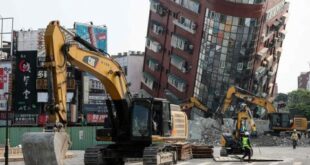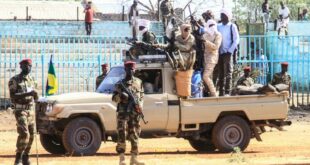The Philippine Institute of Volcanology and Seismology (Phivolcs) released an open-file report on Wednesday, Jan. 10, analyzing the occurrences of “strong” earthquakes that occurred consecutively in eastern Mindanao in December 2023.

Phivolcs’ study titled “Understanding the December 2023 Earthquakes in Eastern Mindanao, Philippines: What Happened and Why It Matters,” found that another “major” earthquake of magnitude 7 or higher is possible in eastern Mindanao.
The National Disaster Risk Reduction and Management Council (NDRRMC) reported that the 7.4-magnitude earthquake in Hinatuan, Surigao del Sur on Dec. 2 and the 6.8-magnitude earthquake in Cagwait, Surigao del Sur on Dec. 4 caused moderate to strong aftershocks, affecting 170,000 families.
Meanwhile, three people died and 79 were injured.
Interconnectedness of 2 earthquakes
According to the study, the first seismic event, with a magnitude of 7.4, originated at the “subduction interface along the Philippine Trench, where the Philippine Sea Plate pushes and descends beneath the Philippines.”
It pointed out that subduction zones generate significant stress as tectonic plates converge, which can cause powerful earthquakes when released.
Meanwhile, based on Phivolcs’ analysis, the 7.4-magnitude event increased stress by 0.4 to 0.5 bar at the location of the 6.8-magnitude earthquake that caused the “triggering effect.”
“This stress transfer mechanism essentially means that the stress from the first quake influenced the occurrence of the second one,” the study said.
“This emphasizes the interconnected nature of seismic events in subduction zones,” it added.
Furthermore, the study looked into the “stress increase” to the surrounding faults caused by the first earthquake, where “failure” could potentially promote earthquakes “in regions both north and south of the magnitude 7.4 epicenter along the Philippine Trench.”
“Consequently, the anticipation is for aftershocks, possibly even another mainshock, to occur in these specific areas,” the study said.
Meanwhile, the study noted the possibility of the rise of “shallower” earthquakes along the trench is “concerning” as it amplifies possibility for tsunami to occur.
Seismically active
Phivolcs also noted that Mindanao is in the southern Philippines, a “seismically active” region with a history of moderate to strong earthquakes.
“It is bounded to the east by the Philippine Trench, where the Philippine Sea Plate converges northwestward towards Mindanao at a rate of 10 cm/yr,” the study said.
“The Philippine Fault traverses the entire length of eastern Mindanao for about 500 km. These major tectonic structures, including the Philippine Trench, have high slip rates,” it added.
Phivolcs said that Mindanao, particularly its coastal communities, is at risk of tremors and tsunamis as a result of sudden movements beneath the ocean.
It advised that communities must prioritize earthquake and tsunami preparedness.
“Preparedness, mitigation, and response efforts must be enhanced to significantly reduce the risk from these hazards,” Phivolcs said.
*****
Credit belongs to : www.mb.com.ph
 MaharlikaNews | Canada Leading Online Filipino Newspaper Portal The No. 1 most engaged information website for Filipino – Canadian in Canada. MaharlikaNews.com received almost a quarter a million visitors in 2020.
MaharlikaNews | Canada Leading Online Filipino Newspaper Portal The No. 1 most engaged information website for Filipino – Canadian in Canada. MaharlikaNews.com received almost a quarter a million visitors in 2020.



